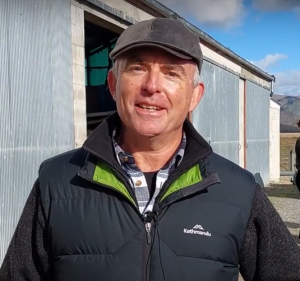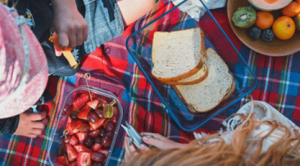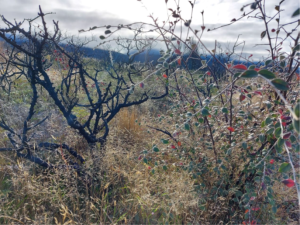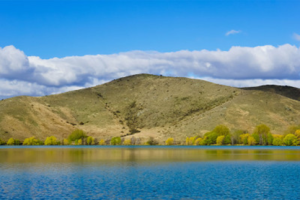Upper Waitaki Water Zone Committee progress report
Each of Waitaha/Canterbury’s water zone committees has an action plan which outlines how they will work with the community to deliver their aspirations for freshwater as outlined in the Canterbury Water Management Strategy (CWMS). Committees report annually, to let the CWMS partners and community know how things are tracking.
2022/23 Progress report
From the chair

Upper Waitaki Water Zone Committee Chair, Mat Bayliss
Reflecting on 2022/23, it began with two capable new community representatives joining the committee: Adriana Theobald and Marcelo Carena. We’ve also had Crs Nick Ward (Environment Canterbury), Scott Aronsen (Mackenzie District Council) and Brent Cowles (Waitaki District Council) join the committee as council representatives. Adriana’s support as deputy chair has been valuable, as has our mana whenua leaders Rynee de Garnham and Michael McMillan. I’m very grateful for the leadership and passion our zone committee members bring to the table. We have a very large zone, some challenging issues, and a diverse community of interest.
I’m pleased with how quickly our refreshed committee came together to focus on our priorities. Consequently, we were able to support several worthwhile projects in 2022/23 utilising the Canterbury Water Management Strategy (CWMS) Action Plan budget, as profiled in this report and achieve some impactful community engagement.
The highlight of 2022/23 was our community hāngī hosted in May 2023 at Omarama Station by Richard and Annabelle Subtil. Led by Michael McMillan, ably supported by whānau, this was a great day of engagement and learning together for the local school, community representatives, the zone committee, and Environment Canterbury staff.
This time of kotahitanga, or togetherness, is always a special event for our committee.
Key achievements for 2022/23
- Utilising our available CWMS Action Plan budget for 2022/23 ($50,000) across four projects that align well with our Action Plan.
- Continuing support for the work of leading groups in our water zone such as Ōhau Conservation Trust and the Ahuriri Community Catchment Group.
- The committee’s annual hāngī hosted at Omarama Station in May.
- Our Love Our Lakes brand continues to develop and promote environmental responsibility within our water zone.
Local projects helping to deliver on the CWMS targets
Read some of the stories about what is being done in the zone to deliver on the CWMS targets.
Working with key partners

Love our lakes: bring your own waste-free picnic
We continue to develop Love Our Lakes into a brand that connects our vast and diverse community of interest to the actions and activities needed to care for our precious lakes and rivers.
The emphasis of the summer campaign is to educate recreational lake users to respect our special environment. The Upper Waitaki Water Zone Committee is proud of the Love Our Lakes brand, and we are working to expand it beyond the recreational users to include other vitally important community-led initiatives.
The 2022/23 summer campaign focused on encouraging visitors to recreate waste-free. Using reusable containers, using toilets, taking rubbish home and responsible dog ownership. As part of the summer promotion, a photo competition was introduced, via Facebook, with winners receiving a sustainable picnic basket, and equipment.
The CWMS targets are: Ecosystem health and biodiversity and Recreational and amenity opportunities.
Action Plan budget project

Burnt native shrubland plants and cotoneaster re-growth on the margin of Lake Ōhau before the control operations, April 2022
In May 2022, the Ōhau Conservation Trust received CWMS Action Plan Budget support to undertake follow-up control of cotoneaster in an area along the western lake shore between the Village and the Lake Ōhau Lodge and to the west of Lake Ōhau road (the control area).
The Trust has been working since 2015 with Environment Canterbury and the Department of Conservation to control the spread of cotoneaster in this area.
The control work followed up on previous efforts and continues to contain and significantly reduce the amount of cotoneaster in the area. Cotoneaster plants that were scattered along the riparian margin of Lake Ōhau have been removed. It is important to keep the extent of the plants contained to reduce the spread of seeds to new areas. Areas where cotoneaster has regrown after the 2020 wildfire were also targeted and plants were removed.
The CWMS targets are: Ecosystem health and biodiversity and Recreational and amenity opportunities.
Ground work in the zone

New research has been completed on the Wairepo Arm near Lake Ruataniwha
A detailed summary of water quality in the lakes was shared with the Upper Waitaki Water Zone Committee meeting in December 2022, including new groundwater research from the Environment Canterbury science team.
Wairepo Arm and Kellands Pond are two small lakes located to the south of Lake Ruataniwha that are sensitive to nutrients, so have additional restrictions on farming and land use near them. When considering water quality limits for this area, the committee recommended Environment Canterbury undertake research to better understand the movement of nutrients from groundwater and surface water into these lakes, to help inform future decision making.
This led to an investigative program in 2020 to install eight shallow piezometers adjacent to Wairepo Arm and Kellands Pond and three monitoring wells in the wider catchment of the two lakes. The work was conducted with cooperation from local landowners.
The results have led to a much better understanding of groundwater flows across this catchment, with evidence local groundwater levels surrounding Kellands Pond and Wairepo Arm rise and fall with the lake levels, demonstrating the close connection between groundwater and the lakes.
The data also highlighted groundwater in the catchment of the two lakes generally flows towards the north-east, from the hills in the upper part of the catchment. This means intensive farming further up the catchment is likely to have an impact on the Wairepo Arm/Kellands Pond Lake system.
The CWMS targets are: Environmental limits, Ecosystem health and biodiversity and Recreational and amenity opportunities.
Delivering the community's vision for freshwater
The Canterbury Water Management Strategy (CWMS) puts some responsibility for finding solutions for freshwater management in the hands of the community, with support from councils, Ngāi Tahu, and others. The strategy sets out freshwater goals and targets to deliver the community’s vision for freshwater.
Each of the community-led water zone committees work collaboratively to develop freshwater recommendations for councils to help ensure plans give effect to these goals and targets.
Within each target area, there are several specific time-bound targets to be achieved and these are monitored and reported on to ensure progress is being made.
The CWMS targets are: Environmental limits, Ecosystem health and biodiversity, Natural character of braided rivers, Kaitiakitanga, Drinking water, Recreational and amenity opportunities, Water use efficiency, Irrigated land area, Energy security and efficiency and Indicators of regional and national economies.
Future challenges and opportunities – 2023/24
In August 2023, the committee received an update from the Environment Canterbury science team on the increasing trend in the Trophic Level Index (TLI) of the Ahuriri Arm of Lake Benmore. This was a call to action for the committee and followed previous science briefings highlighting the impacts of nutrients on the lakes.
In October, the committee arranged a meeting with Ahuriri catchment farmers – including those with resource consents impacted by TLI results – to discuss these trends and develop plans for working collectively on the issue.
The committee achieved excellent attendance and engagement, largely due to some excellent work by Environment Canterbury’s land management advisor and farming community. The committee will continue working with these farmers, as a collective, with the goal of turning this TLI trend around, alleviating the impacts on affected farms, protecting the high amenity value of Lake Benmore, and the ecology of the impacted tributaries.
The Ahuriri catchment is the committee’s priority for the foreseeable future. Having achieved good engagement, following through with support for this important farming community is essential.
The Love Our Lakes 2023/24 summer campaign has been prepared and continues to build this brand for our Water Zone.
The committee is also contributing to the planning process led by Environment Canterbury to develop a new Regional Policy Statement for Canterbury’s integrated planning framework in 2024.
Find out more
- Learn more about the Upper Waitaki Water Zone Committee.
- See the Upper Waitaki Water Zone Committee Action Plan 2021-2024.
- Download the Upper Waitaki Water Zone Implementation Programme (PDF file, 6.34MB).
